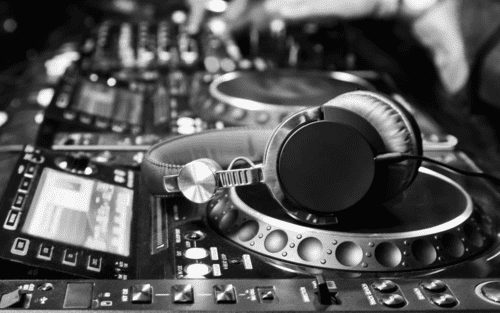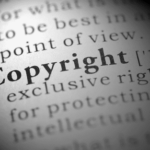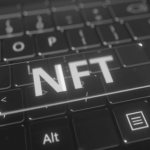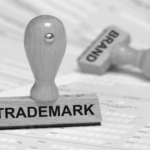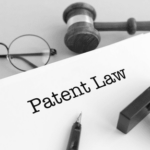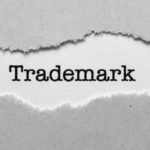Introduction
In the massive world of music, artists, DJs, and other creators play a crucial role in creating unique experiences for massive festivals, concerts, and other content that draw in listeners and audiences. DJ mixes, which usually manifest as a seamless blend of tracks and sounds, have become a growing art form. There are also numerous remixes of individual songs. Behind the computers and turntables, however, lies a complex landscape of copyright law that everyone should understand. This article discusses some of the important copyright laws as it pertains to DJ mixes and remixes.
The Basics Of Copyright Law
Copyright is a legal framework that grants creators exclusive rights to their original works. These works can span various forms of expression, including literature, music, visual art, architecture, software, and more. Copyright protection extends to both published and unpublished works.
Key Components of Copyright Law
- Eligible Works: Copyright protection applies to original, tangible works of authorship fixed in a tangible medium of expression. As noted above, this includes literary works, musical compositions, paintings, sculptures, photographs, films, and even computer software code.
- Exclusive Rights: Copyright holders are granted a bundle of exclusive rights, including the right to reproduce, distribute, publicly perform, publicly display, and create derivative works based on their original creation.
- Duration of Protection: In the United States, copyright protection generally lasts for the creator’s lifetime plus 70 years. After this period, the work enters the public domain and can be used by anyone without the need for permission.
- Copyright Notice: While not required, displaying a copyright notice (©), along with the creator’s name and the year of creation, can provide notice of ownership and deter potential infringers.
- Registration: While copyright protection is automatic upon creation, registering your work with the copyright office offers additional legal benefits, such as the ability to bring a suit, and the ability to obtain statutory damages and attorney’s fees, if the infringement occurs after registration.
Copyright And A DJ Mix: Understanding The Key Elements
Fair Use Doctrine and Transformative Use: Fair Use is a legal doctrine that provides the most common protection from copyright infringement claims. Section 107 of the Copyright Act provides the statutory framework for determining whether something is a fair use and thus not subject to a copyright infringement claim. The statute points out some uses, such as criticism, commentary, news reporting, teaching, scholarship, and research as examples of activities that may qualify as fair use. These uses are not exclusive, however. Section 107 thus requires consideration of the following four factors in evaluating a question of fair use:
- Purpose and character of the use. This includes whether the use is of a commercial nature or is for nonprofit educational purposes. Courts look at how the party claiming fair use is using the copyrighted work. In the Court’s consideration, they are more likely to find that nonprofit educational and noncommercial uses are fair. However, this does not mean that all nonprofit education and noncommercial uses are off the hook and that all commercial uses are infringement. Courts will balance the purpose and character of the use against the other factors mentioned below.
Additionally, this is where the concept of “transformative” use comes into play. Transformative use recognizes that it’s possible to use something while also adding something new, thus modifying its purpose or character and not impairing the original use of the work. With a DJ mix or remix, the more alterations and combinations of tracks, the stronger their argument for fair use or transformative use.
- Nature of the copyrighted work. In this factor, the Courts consider the degree to which the work that was used relates to copyright’s purpose of encouraging creative expression – basically weighing whether you took from a more creative work or a more factual work (like a news article).
- Amount of the work taken in relation to the copyrighted work as a whole. With this, Courts have to look at both the quantity and quality of the copyrighted material that was used. It all depends on the facts. If the use includes a large portion of the work, fair use is often less likely to be found. Conversely, if the use employs only a small amount of the work, fair use is more likely to be found. Interestingly, some cases have found the use of an entire work to be fair under the right circumstances while other cases have determined that using even a small amount of a copyrighted work was determined to be infringement.
This is also where the concept of “sampling” comes into play, among other factors. Sampling in the music industry refers to the practice of taking a portion, or “sample,” of an existing sound recording or musical composition and incorporating it into a new composition. Oftentimes, it manifests in the form of using a portion of one song in a different song or mixes. While transformative fair use is still a potential defense, “sampling” is the term used in the taking of pieces of other musical works.
A famous example is the case between the band Queen and the artist Vanilla Ice. Queen’s “Under Pressure” in 1981 has one of the most infamous bass lines in music history (yes, it just popped into your head). Vanilla Ice then sampled it for his song “Ice Ice Baby” in 1990. Attorneys for Queen threatened a massive copyright infringement lawsuit. Vanilla Ice tried to claim that his melody was different due to an added note between two of the beats. This, however, was not satisfactory to Queen, and they filed the lawsuit against Vanilla Ice anyway. Vanilla Ice ended up settling the case for an undisclosed amount, but this case provides a great example of how it can be hard to draw the line between what constitutes a transformative work and what remains as copyright infringement.
- Effect of the use upon the potential market for or value of the copyrighted work. Here, Courts look at whether, and to what extent, the unlicensed use harms the existing or future market for the copyright owner’s original work.
Respecting Copyrights And Best Practices
Giving credit to original artists and tracks within a DJ mix is not only a sign of respect, but it can aid in establishing the transformative nature of the work. Be warned though, attribution alone does not negate infringement. In addition, works in the public domain are not protected by copyright and can be used freely by anyone. Works may enter the public domain due to the expiration of copyright, lack of proper copyright notice, or intentional dedication by the creator. Here are some examples of songs entering the public domain in 2023. Lastly, to use copyrighted material in ways not covered by fair use or public domain, obtaining proper licenses or permissions from the copyright holder is absolutely necessary to avoid an infringement lawsuit.
Conclusion
DJ mixes and remixes can be a great means of artistic expression that can merge diverse musical elements into new and transformative works. However, those works need to operate within the framework of copyright law, which is often fact specific and hard to decipher. DJs and artists must navigate this landscape carefully. By understanding the basics of copyright law through obtaining proper licenses and advocating for best practices, DJs and artists can continue to create new and awesome mixes that both respect the intellectual work of others and contribute to musical innovation.
Our team at SW&L Attorneys can assist you with your copyright questions and obtaining your own copyright protections. To contact us, call 701.297.2890 or email at info@swlattorneys.com.
The information contained in this article and on this website is for informational purposes only. Do not rely on the information on this website as legal advice. Please refer to the full disclaimer here.


